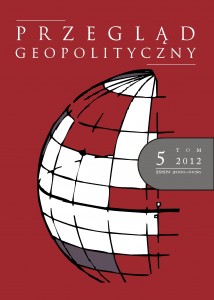KONCEPCJA GRANIC POWOJENNEJ POLSKI WEDŁUG HIPOLITA GLIWICA
THE CONCEPT OF POST-WAR POLISH BORDERS BY HIPOLIT GLIWIC
Author(s): Piotr EberhardtSubject(s): Politics / Political Sciences, History, Recent History (1900 till today), WW II and following years (1940 - 1949), Geopolitics
Published by: Polskie Towarzystwo Geopolityczne
Keywords: Hipolit Gliwic; Polish borders; post-war;
Summary/Abstract: Hipolit Gliwic was a famous political activist of the Second Republic of Poland. At the same time was active in Polish and world freemasonry, where he had a 33rd degree. He was secretary of the National Grand Lodge and a member of the Lodge“Copernicus”. Gliwic was born 24 May 1878 in Warsaw. He studied in Odessa and Sankt Petersburg. After graduation, he worked on the political level in the Polish Socialist Party and held responsible positions in industry associations. He was also a director of the syndicate of Russian metallurgy. After obtaining independence by Poland, Gliwic worked in the Polish diplomatic missions in Washington and Paris. After returning home, prepared and executed the Polish economic development project. He held the highest positions in the state. At the same time he was president of numerous industrial joint-stock companies, mining and banking. He represented Poland at a meeting of the League of Nations and the international economic conferences. He had the prestige and recognition of the most outstanding representatives of the world of politics and finance. During the occupation, worked closely with the command of the Home Army, which instructed him to prepare documentation on post-war reconstruction and development of the Polish economy, including the program of industrialization and urbanization of the country. Arrested by the Gestapo on April 8, 1943, he committed suicide in prison in Pawiak. Hipolit Gliwic expected compensation and the great shift of Polish west border on the Oder and Neisse. He assumed that all of East Prussia will become an integral part of Polish. In his vision Polish state territory would be slightly reduced (from 388 thousand km sq to 360 thousand km sq), but Poland gets richer areas, better managed, and the Polish territory is closed with broad access to the sea. In a Gliwic’s concept within the country there would be, apart from Gdynia, three major sea ports: Gdańsk, Szczecin, Königsberg.
Journal: Przegląd Geopolityczny
- Issue Year: 2012
- Issue No: 05
- Page Range: 99-104
- Page Count: 6
- Language: Polish

